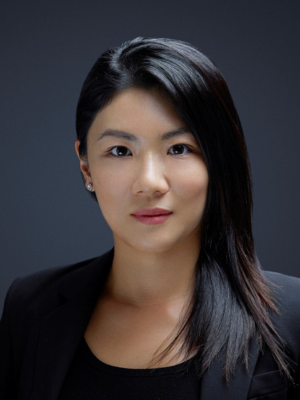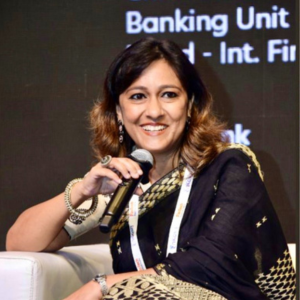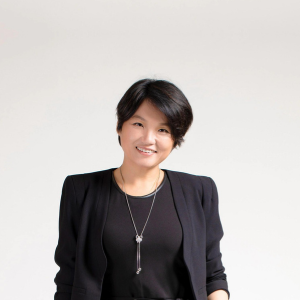 “You have to put in dedication and hard work to be successful. There are no short cuts,” says Mandy Wan. “Stay true to your core principles and advancement will follow. Be open-minded to embracing new opportunities and giving them your best effort.”
“You have to put in dedication and hard work to be successful. There are no short cuts,” says Mandy Wan. “Stay true to your core principles and advancement will follow. Be open-minded to embracing new opportunities and giving them your best effort.”
Wan shares how she values learning from diverse experiences, her insights on setting the right culture in a team, and what it means to be a leader who “walks the talk.”
Finding the Right Fit on the Trading Floor
Wan learned from an early age the value of hard work and determination in pursuing her dreams. Growing up in Hong Kong as the eldest child of parents who were refugees of the Chinese Cultural Revolution, Wan took care of her younger brothers and worked after school and during summer breaks to help contribute to the family. Recognizing that to build the life she wanted, she needed to find the right job to support it, Wan attended business school with a focus on accounting.
Although Wan ultimately found accounting wasn’t for her, she remained motivated to work in an environment where she could learn and meet people from different backgrounds and explore other countries. She found what she was looking for on the trading floor.
“During my final year of school, I secured a part-time role at UBS where I worked on the trading floor. It became clear to me that this was where I wanted to be. The environment is incredibly diverse, with people from many different cultures, and the fast-paced, dynamic nature of the job presents new challenges every day, making it exciting.”
Directing her energy and enthusiasm to every opportunity, Wan successfully moved up through UBS, having the chance to travel around the world to market Asian financial products. She relished these experiences as they broadened her horizons, giving her a window into how other people communicate and make investment decisions. Now as the Managing Director, Head of Markets, and Co-Head of CIB APAC at Wells Fargo, Wan channels her tenacity and drive into leading Wells Fargo’s APAC Markets business.
Shaping the Business from the Ground Up
Wan’s entrepreneurial spirit shines through when she describes her passion for leading the Wells Fargo Markets business in APAC.
“I have a full mandate to manage the client franchise in Asia. The opportunity is thrilling as it allows me to envision and shape the business we aim to create from the ground up. I love that aspect because I get to continually learn and be challenged by it.”
In addition, Wan points to the people she works with as integral to what makes her feel deeply committed in her role. She highlights the advantage of being able to recruit those who share that drive when you are in the position of starting anew.
“I always feel more energized when there are people around me who share the same passion.” She continues, “When you build a business, you have the opportunity to assemble the team, and you want to look for someone who is entrepreneurial and energetic and has the passion to enhance the business. When you get the chance to pick a team like that, people feel invested in the sense of ‘we get to do this together.’”
Setting the Right Culture
Another advantage of leading the process of developing a business and team is being able to shape the culture from the beginning. For Wan that means, “a culture of doing the right thing, of running the business, and doing what’s right for the customer and the company. The customer values partnership a lot more and are looking for a trusted party to help them really talk about how we can help them become financially successful.”
Setting an ethos of integrity not only aligns with what customers want, but it is also what members of the team want. As Wan reflects, “employees these days desire to work for a company with aligned aspirations, where they can develop personal achievements. They’re looking for meaningful goals that matter to them, and they want to work alongside people they respect and can learn from, and this particularly applies to recruiting and retaining young talent.”
As setting the right culture recruits, retains and motivates the team, it ultimately is good for business.
“A positive culture can lead to favorable P&L outcomes, as well as financial success and satisfied customers.”
Being a Leader who “Walks the Talk”
In thinking about how she creates the right culture for the business and her team, Wan points to effective communication and recognizing that you have to “walk the talk” as a leader.
“I give very candid feedback, but constructively. The team also needs to feel comfortable to embrace candor with each other in a respectful way.”
She highlights that, “this industry is all about people and the number one thing about working with people is communication. I always urge people to reflect on and improve their communication style.”
As Wan sets the tone for communication by being respectful, but constructive in her interactions, she also is purposeful in how she shows up as a leader, in some cases quite literally.
“The most important thing is that you yourself have to walk the talk. For example, after Covid, a lot of people wanted to work from home. But if you want the team to be in the office, you have to show up. You are demonstrating to them, ‘I’m here and this is why we are here: we need to talk to each other, we need to communicate, because we are on the trading floor’.”
Another example of how Wan models her expectations of others is in how she supports her team’s development.
“If you want people to really take care of junior talent on the floor, you must start with yourself. Consider how you would invest time and mentor your team members. Eventually, everyone will observe your behavior and realize that they should follow suit.”
Be Present in Everything That You Do
Wan relocated to Singapore from Hong Kong last year. Although this wasn’t the first time Wan lived in Singapore, it was the first time she made the move as a mother of three young boys. Getting a family settled while leading the APAC hub made for a busy year and Wan reflects that at times when it’s hard to find work-life balance, she puts extra effort in organizing her schedule, focusing on staying present, and engaging in doing what she committed that time to do.
“Multitasking is a myth. You have to stay focused on what you’re doing in the time that you assigned for it, and then you will find that you are a lot more efficient, therefore improving the quality of time you spend with your family and outside of work.”
Wan also prioritizes wellness and staying active and loves to connect with her kids through sports. As a family they ski, snowboard, and play golf together. She extends this passion for wellness to her work. She is a strong supporter of wellbeing and employee engagement initiatives across the region as a way to engage with her colleagues, devote time to their wellbeing, and give back to the community. Wan is the Executive Sponsor for the Diversity, Equity and Inclusion council in APAC and leads with authenticity and a style that is evident both in the office and in her recreational pursuits.
“Focusing on building the right culture is important for the entire firm. That’s why it is important for me to walk the talk and show up.”
By Jessica Robaire






